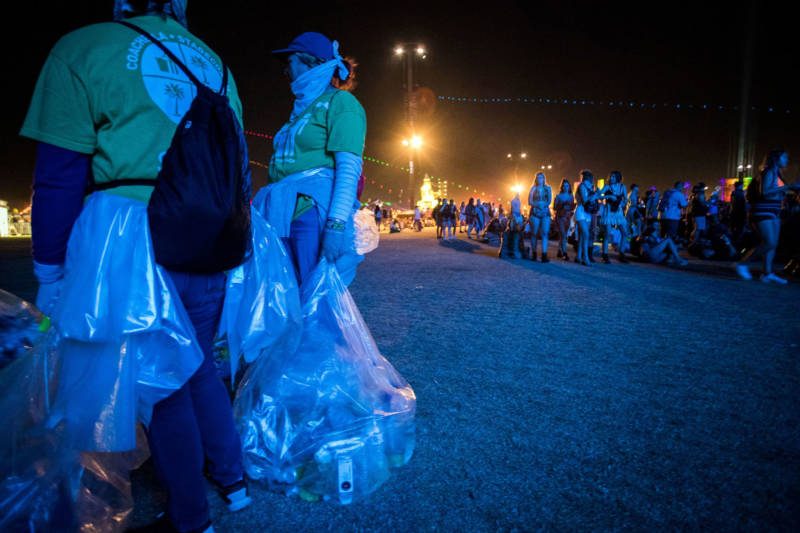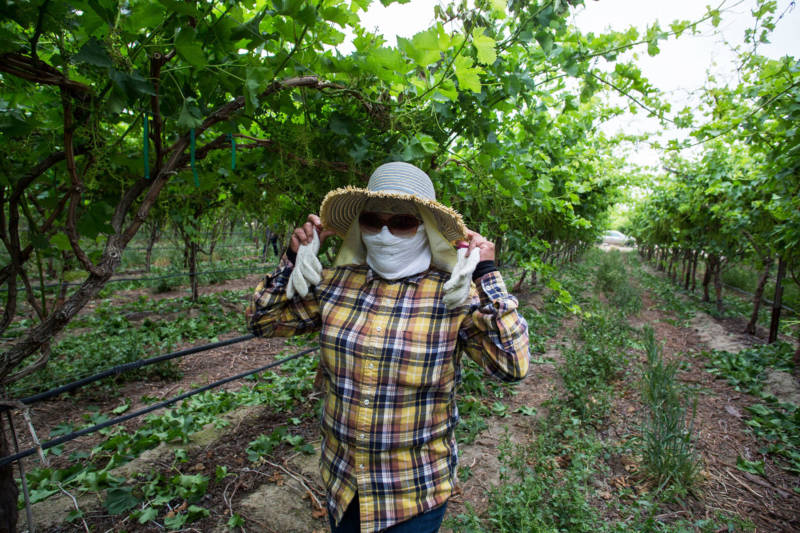It was still dark in the eastern Coachella Valley when Enriqueta Magaña assembled her crew of about a dozen workers along a row of grapevines and demonstrated the work they’d be doing that day. She used both hands to snap small branches off the vines.
As Grape Industry Changes, Farmworkers Pick Up Extra Shifts Collecting Trash at Coachella Festival

“We’re going to work hard,” Magaña, a field forewoman, told her crew that morning in early April. They all wore an unofficial uniform — pants, long-sleeved shirts, brimmed hats and bandannas — to protect their skin from the sun, which would soon bake the California desert. “It’s for the good of all of us.”
For three weekends this month, Magaña is giving similar advice to a crew cleaning up trash after the Coachella and Stagecoach music festivals.
Following eight-hour days in the fields, Magaña and many of her farmworkers change into another uniform — latex gloves and colored T-shirts — and head to the Empire Polo Club in Indio.
When the last concertgoers stumble out of the festival after midnight, the grounds look like “a garbage dump,” Magaña said.
She and her crew work overnight, filling trash bags with soggy plastic cups, grease-stained plates and other objects left behind by attendees. By the time they finish their shift at 3:30 a.m., the grounds are spotless again.
Coachella 2017 was the highest-grossing festival in the world, according to the most recent statistics available from Pollstar, a publication focused on the concert industry. Working behind the scenes are area residents who, according to Magaña, earn minimum wage to make sure the grounds are pristine for each day's festivities.

The festivals coincide with the grape-growing season, so Magaña and her team typically labor all day in the fields, often amid sweltering temperatures, and then all night at the festivals, catching an hour or two of sleep and a cup of coffee in between shifts.
But in the Coachella Valley, grape growers planted about 1,000 fewer acres in 2017 than they had in 2013, according to the Riverside County Agricultural Commissioner’s Office.
The reduction in grapevines, Magaña said, has resulted in fewer hours of low-wage work in the fields. So residents continue picking up extra shifts at the festival, laboring in the shadows of an event that has made their hometown a household name.